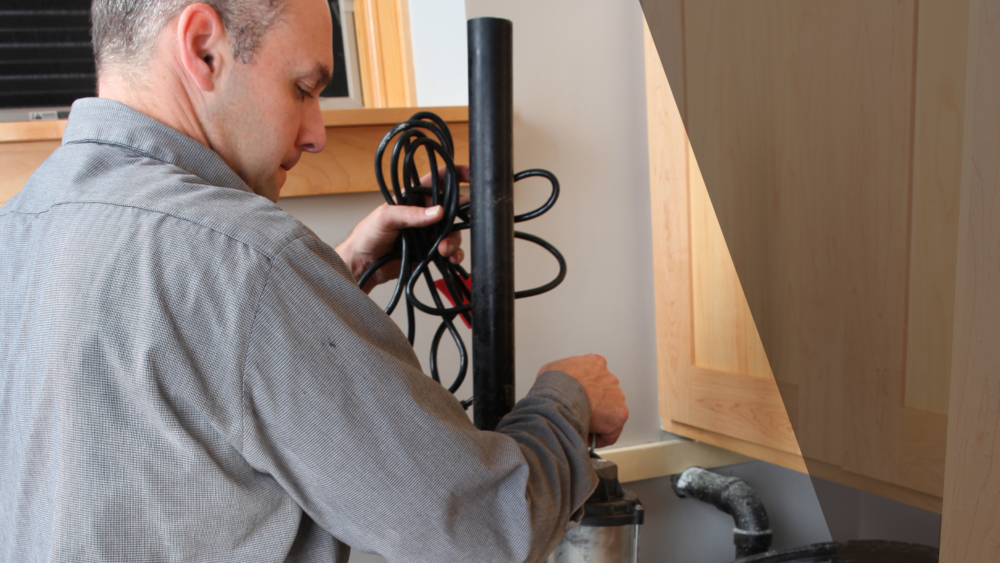Think of your home’s pump system as the unsung hero of your household – always there, working tirelessly behind the scenes. But even heroes need a little care to keep performing at their best. That’s where pump maintenance comes in, a crucial yet often overlooked task that could mean the difference between a smoothly running home and unexpected disruptions.
Understanding the Importance of Pump Maintenance
To ensure your pumps stay in tip-top shape and avoid unexpected breakdowns, regular maintenance is a must. A thorough maintenance checklist can be very beneficial as it guides the maintenance engineer through the process.
This includes regularly checking and cleaning your pumps and replacing any parts that are worn out. A consistent maintenance program not only extends the life of your system but also reduces operating costs.
Benefits of Regular Pump Maintenance
The purpose of pump maintenance is to make sure that pumps are running as efficiently as possible. It reduces equipment costs by extending the life of the equipment and ensures that your pumps are not being neglected.
No matter the application or the operating conditions, a defined and routine maintenance program will extend the life of a pump. Well-maintained equipment lasts longer and requires fewer and less-expensive repairs, especially when some pumps have lifespans that extend 15 years or longer.
Consequences of Neglecting Pump Maintenance
Breakdown/run-to-failure maintenance is likely the type of maintenance that comes to people’s minds when they think about pump maintenance. A great deal of homeowners neglect to perform maintenance on their pump systems, only calling pump or plumbing professionals once their pumping system breaks down or completely fails.
Waiting to fix a pump system until it has broken down can actually end up costing more money in the long run than periodically maintaining your pumping system. It can lead to pump failure and increased equipment fatigue.
Establishing a Maintenance Program
A routine pump maintenance program not only extends the life of your system but also reduces operating costs. Consistent maintenance also ensures there is enough maintenance history recorded to identify the source of the problem faster.
Preventive maintenance focuses on proactive measures such as regular inspections and adjustments. This can help avoid potential problems and keep pumps operating at peak efficiency.
Essential Components of a Pump Maintenance Checklist
The strength and effectiveness of your pump preventive maintenance plan depend on how robust your checklist is. While you would want to include all possible checks in the plan, it is impractical and inadvisable for all routine checks.
Therefore, the checklist is divided based on the frequency of checks, making it more sustainable and effective. Here are some essential components to include in your pump maintenance checklist:
Daily Maintenance Tasks
- Check pump exterior for any leaks
- Clean pump and nearby region to remove any debris
- Check for excessive pump vibration or unusual noises
Monthly Maintenance Tasks
- Check for foaming or oil discoloration
- Check bearing temperature for overheating
- Inspect all gaskets to ensure there are no oil leaks
Quarterly Maintenance Tasks
- Inspect self-flush pumps if applicable
- Clean bearing covers if needed
- Check pump cooling system
Annual Maintenance Tasks
Conduct a thorough annual inspection of the entire pumping system, including:
- Checking all electrical connections
- Inspecting the condition of the impeller and other wear parts
- Checking alignment of pump and motor
- Testing safety controls and alarms
By following a comprehensive maintenance schedule, you can ensure the longevity and optimal performance of your pumping system.
Monitoring Key Performance Indicators for Pump Health
While wear is inevitable with industrial equipment, it does not have to undermine a pump’s performance. The best way to keep a process pump operating at its peak throughout its lifespan is with protective and preventive maintenance.
By following and maintaining a regular maintenance schedule, operators can ensure prolonged, optimal pump performance. Here are some key performance indicators to monitor:
Measuring Flow Rate and Discharge Pressure
The flow rate is the volume of fluid that passes per unit time. Discharge pressure is the pressure at the pump outlet. By regularly measuring and tracking these metrics against the pump’s performance benchmarks, you can identify any deviations early on.
Monitoring Head Pressure
The head pressure is the height to which the pump can raise a column of the liquid it is pumping. If you notice changes in the head pressure, it might be a sign that your impellers are wearing out or there’s a leak hiding somewhere in the system. Regularly monitoring the head pressure and comparing it to benchmarking data is crucial.
Detecting Excessive Vibration
Excessive vibration is often an early warning sign of potential problems like misalignment, looseness, or bearing issues. By diving into the world of vibration analysis tools, you can catch and sort out these glitches before your pump waves goodbye.
By regularly monitoring these key performance indicators, you can stay on top of your pump’s health and take proactive measures to maintain optimal performance.
Inspecting and Maintaining Critical Pump Components
Mechanical maintenance typically involves replacing parts that have worn out or broken down due to normal wear and tear. Here are some critical pump components that require regular inspection and maintenance:
Checking Mechanical Seals
Mechanical seals prevent leakage along the rotating shaft. Regularly check for any visible leaks or signs of wear on the mechanical seal. If the seal is damaged, it needs to be replaced promptly.
Ensuring Proper Shaft Alignment
Misalignment between the pump and motor shaft can cause excessive vibration, leading to premature failure of bearings and seals. Use laser alignment tools to ensure proper shaft alignment during installation and maintenance.
Monitoring Bearing Temperatures and Lubrication
Bearings play a crucial role, holding up rotating shafts and keeping everything moving smoothly. Regularly monitor bearing temperatures and ensure adequate lubrication. High temperatures or lack of lubricant can lead to bearing failure.
Check the lubricant level and condition frequently. Over-lubrication can be just as damaging as under-lubrication. Also, monitor the motor amp draw, as an increase can indicate bearing issues.
Inspecting Impeller Condition
The impeller is responsible for moving the fluid through the pump. Regularly inspect the impeller for signs of wear, corrosion, or damage. Ensure that the impeller is spinning freely and there is no buildup of debris.
By diligently inspecting and maintaining these critical components, you can prevent unexpected failures and extend the life of your pumping system.
Implementing Preventive Maintenance Techniques
Preventive maintenance is all about staying ahead of the game, regularly checking and tweaking things to dodge future issues and keep your pumps humming along beautifully. Here are some preventive maintenance techniques to implement:
Following Manufacturer’s Maintenance Guidelines
Each pump comes with specific manufacturer’s instructions for maintenance. Make sure to follow these guidelines closely, as they are tailored to the specific make and model of your pump.
The manufacturer’s manual will provide recommendations on the frequency of inspections, lubrication intervals, and parts replacement schedules. Adhering to these guidelines is crucial for optimal pump performance and longevity.
Proper Lubrication Practices
Lubrication is essential for reducing friction and wear on moving parts. Use the recommended lubricant type and quantity as specified by the manufacturer.
For oil-lubricated bearings, use non-foaming and non-detergent oils. Fill the oil to the midpoint of the sight glass. Over-lubrication can be just as damaging as under-lubrication.
For re-greaseable bearings, avoid mixing greases of different consistencies or types. Make sure the bearings are completely clean to prevent contamination. Over-greasing can create solids on the bearings and force them to run at higher temperatures.
Scheduling Preventive Maintenance Tasks
Establish a regular maintenance routine and schedule preventive maintenance tasks at appropriate intervals. This includes daily, weekly, monthly, and annual tasks.
Use a computerized maintenance management system (CMMS) to plan, schedule, and track maintenance activities. This ensures that no task falls through the cracks and helps you maintain a complete maintenance history.
So, by getting into the habit of these preventive maintenance tricks, you can cut down on those unexpected shutdowns, make your equipment last longer, and get the most out of how well your pumping system works.
Troubleshooting Common Pump Issues
Despite regular maintenance, pumps can still encounter issues. Here are some common pump problems and how to troubleshoot them:
Identifying and Fixing Leaks
Leaks can occur due to worn seals, damaged gaskets, or loose connections. Regularly inspect for any visible leakage and promptly address the issue.
Replace worn seals or gaskets and tighten any loose connections. Also, check the condition of the shaft seal and ensure proper pump alignment to prevent leaks.
Addressing Excessive Vibration
Excessive vibration can be caused by misalignment, unbalanced impellers, or worn bearings. Use vibration analysis tools to identify the root cause of the vibration.
Correct any misalignment issues, balance the impeller, or replace worn bearings as necessary. Also, check the pump’s foundation for any cracks or looseness that could be causing vibration.
Diagnosing Bearing Failures
Bearing failures can be caused by lack of lubrication, contamination, or misalignment. Monitor bearing temperatures and vibration levels to detect potential issues early.
Ensure proper lubrication practices and keep the bearings clean. If a bearing has failed, replace it promptly to prevent further damage to the pump.
Resolving Shaft Seal Issues
Shaft seal problems can lead to leaks and reduced pump efficiency. Regularly inspect the seal condition and replace worn or damaged seals.
Ensure proper installation and alignment of the seal faces. Also, check the condition of the shaft sleeve for any wear or damage that could be causing seal issues.
By promptly identifying and addressing these common pump issues, you can minimize downtime and keep your pumping system running smoothly.
Pump Maintenance FAQs:
What is pump maintenance?
Pump maintenance involves regular checks and fixes to keep pumps running smoothly. This helps in avoiding breakdowns and costly repairs.
What is the standard checklist for pump maintenance?
The standard checklist for pump maintenance includes inspecting seals, aligning shafts, checking lubrication, and monitoring for leaks or vibrations.
How do you maintain a motor pump?
To maintain a motor pump, you should clean it regularly, ensure proper lubrication, check alignment frequently, and monitor its performance closely.
How often should pumps be maintained?
Pumps require monthly inspections at a minimum. More complex systems might need weekly checks.
Conclusion
In our journey through the ins and outs of keeping those vital pumps in tip-top shape, we’ve seen that regular pump maintenance isn’t just about avoiding mishaps; it’s about ensuring efficiency and longevity. From checking mechanical seals to monitoring flow rates, each step is a stride towards peace of mind.




